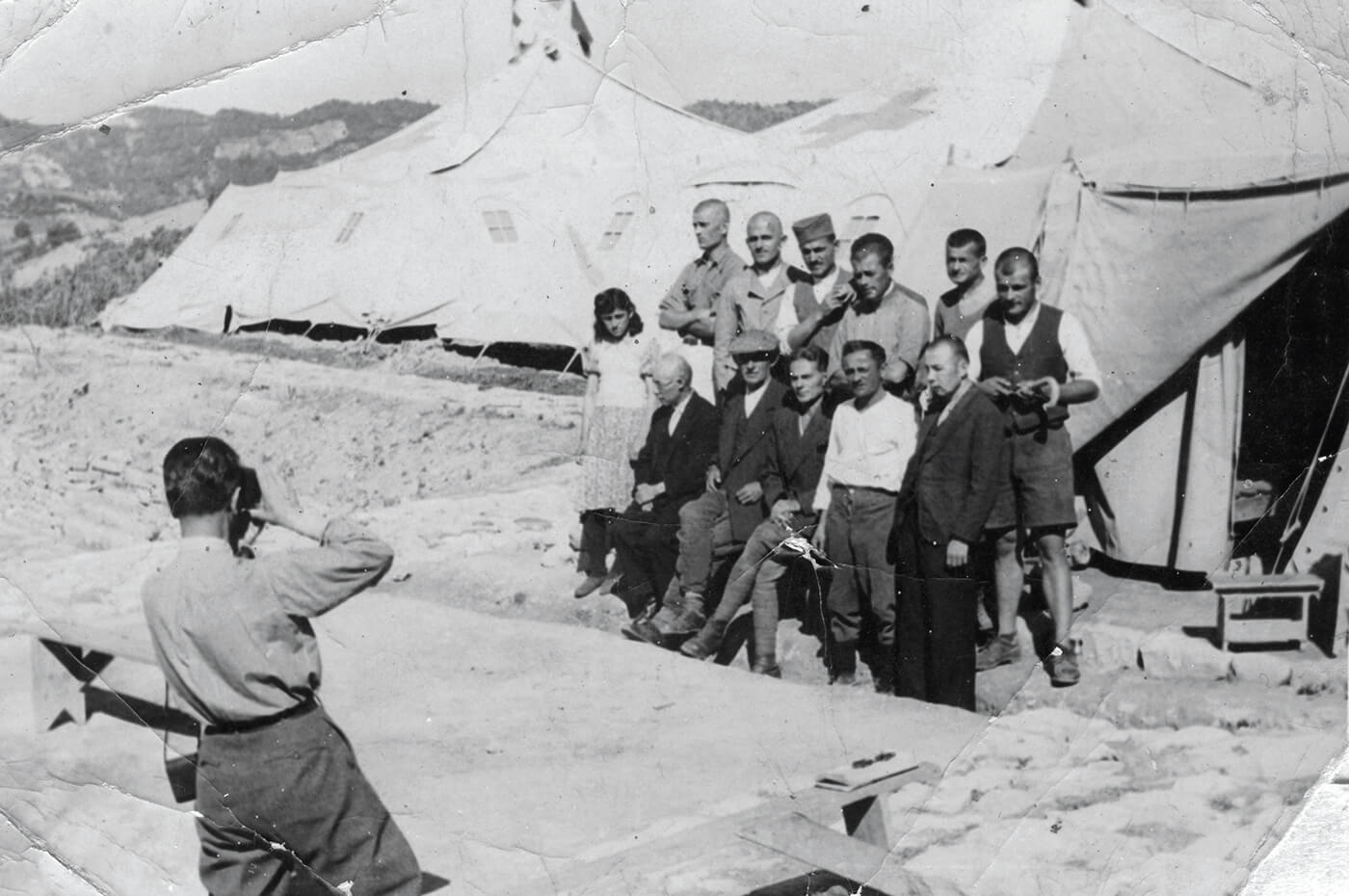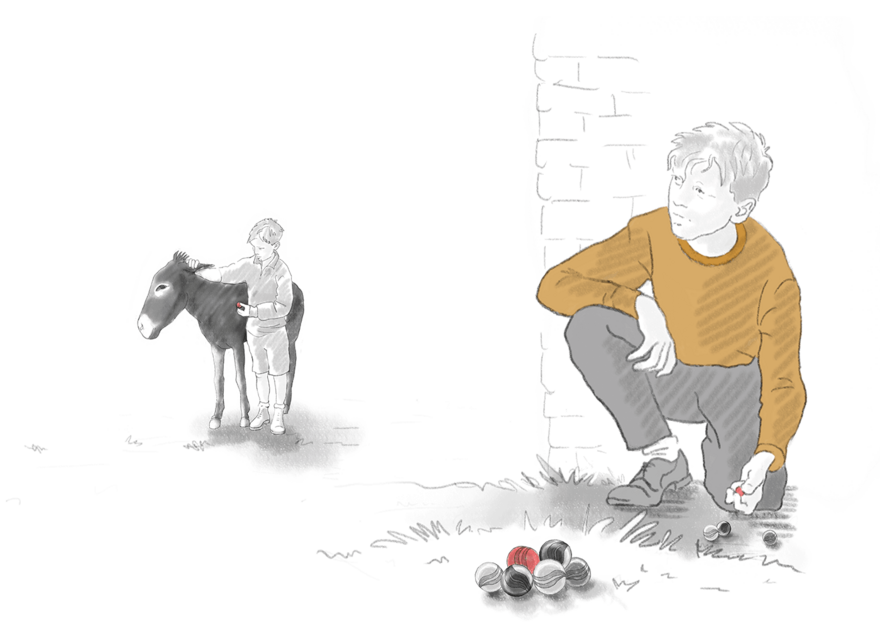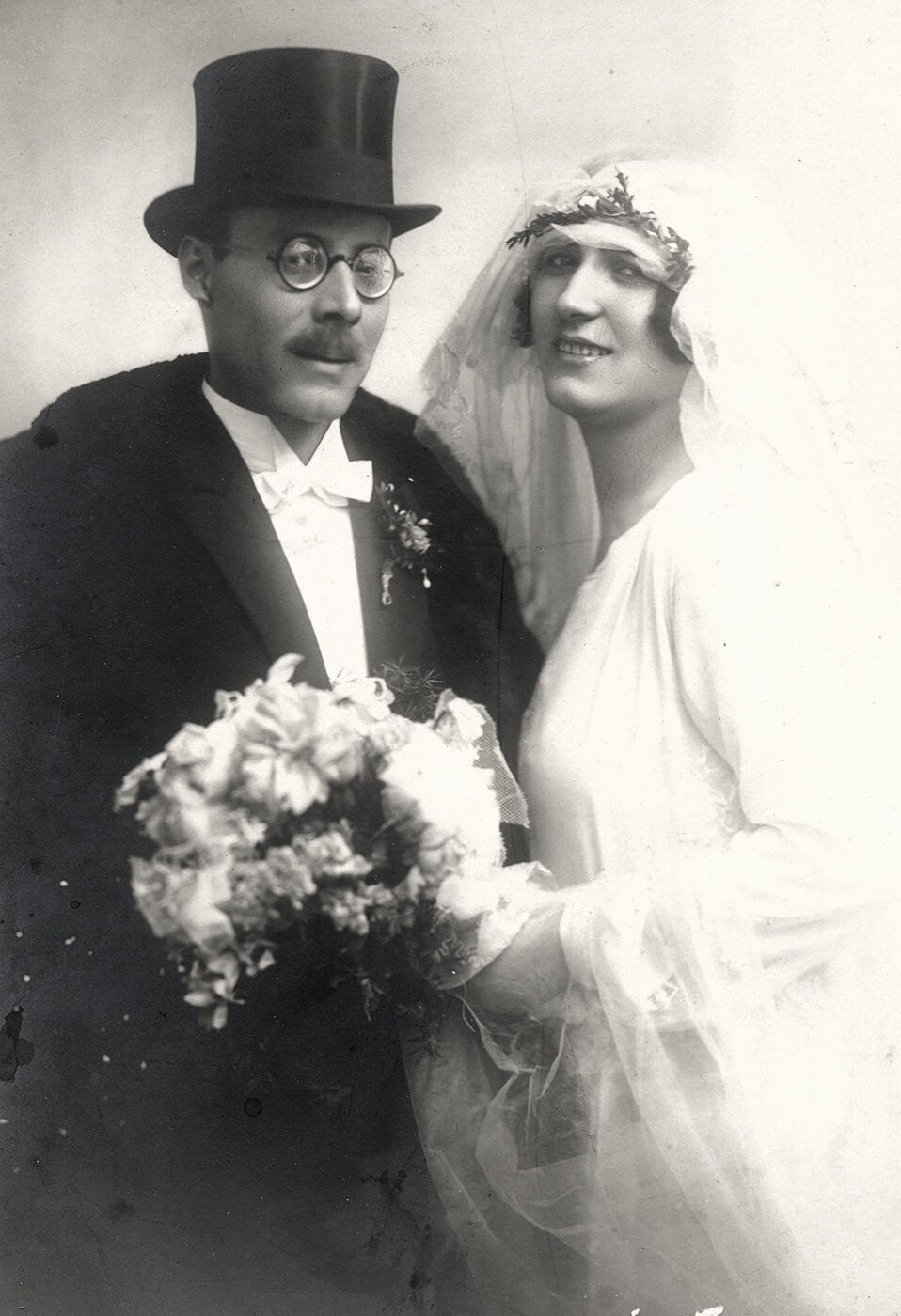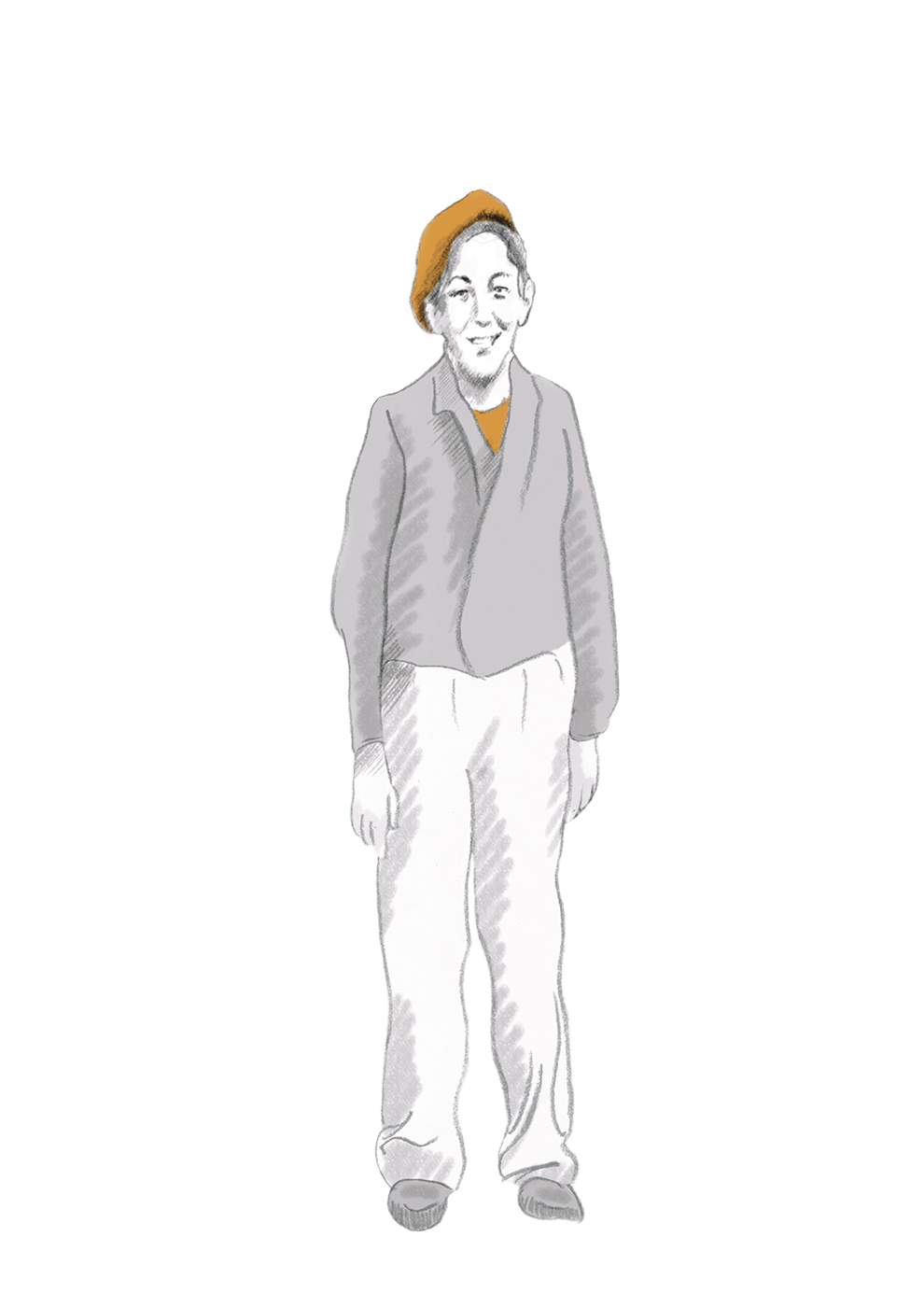
"There was no school. We lived in the street."
Raul Teitelbaum, 2002
With the partisans
Raul was ten years old when the Wehrmacht marched into his native city of Pristina (Prizren, Kosovo). Italian troops later occupied the city. Raul joined an illegal partisan youth organization. When his father was arrested and interned for a time at a camp in Albania, friends of his parents took care of him. After the capitulation of Italy, Raul and his parents followed the partisans into the mountains. When they returned to Pristina in 1944, they were arrested and transported to the "Semlin Jewish camp" near Belgrade. From there the SS later deported the family to Bergen-Belsen concentration camp.
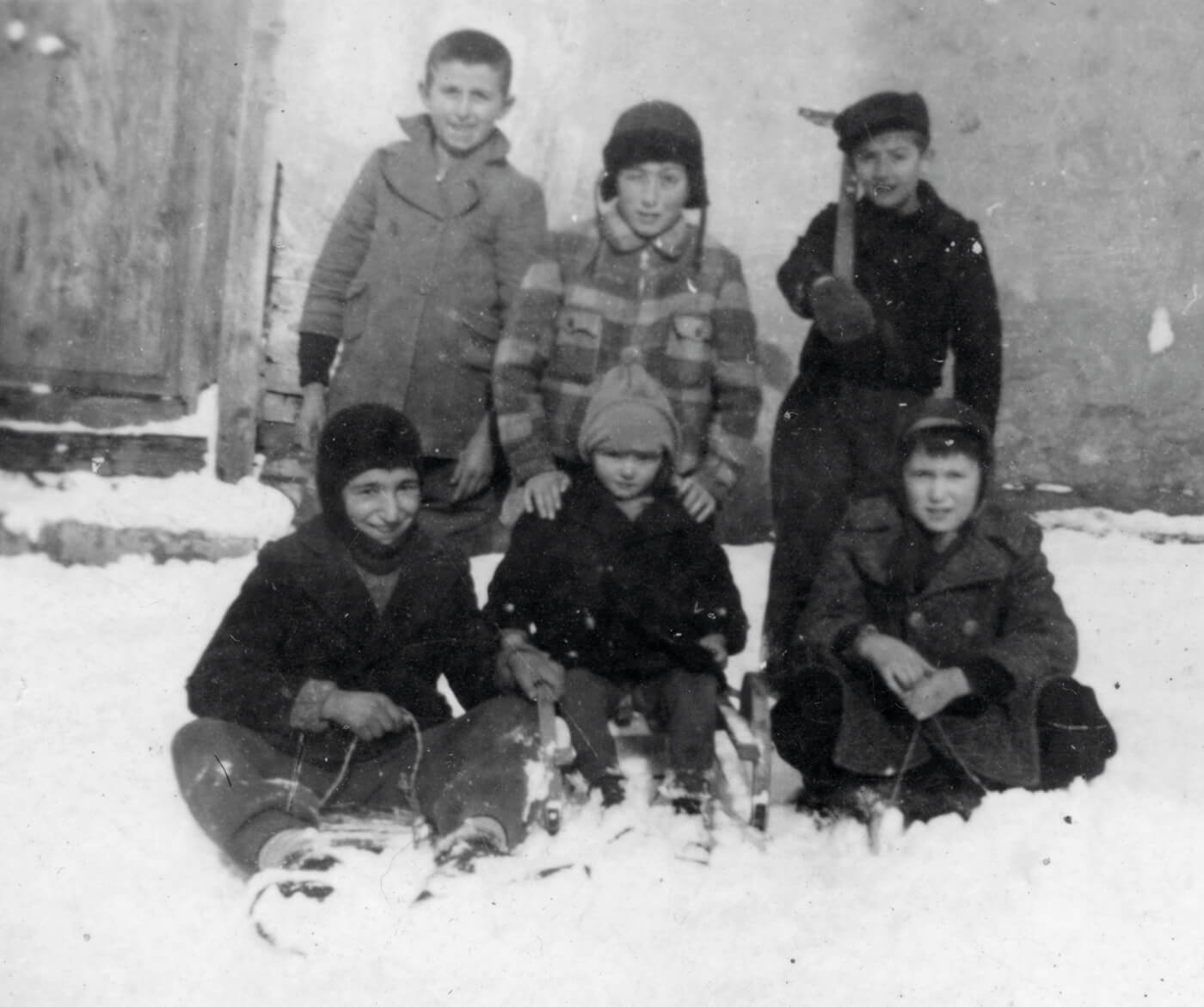
The young people passed out flyers and painted over Italian propaganda posters. To stop the trucks they poured sugar into the gas tanks and let air out of the tires. In his father’s doctor’s office, Raul secretly collected medicine for the partisans. His parents knew nothing about this, he believes.
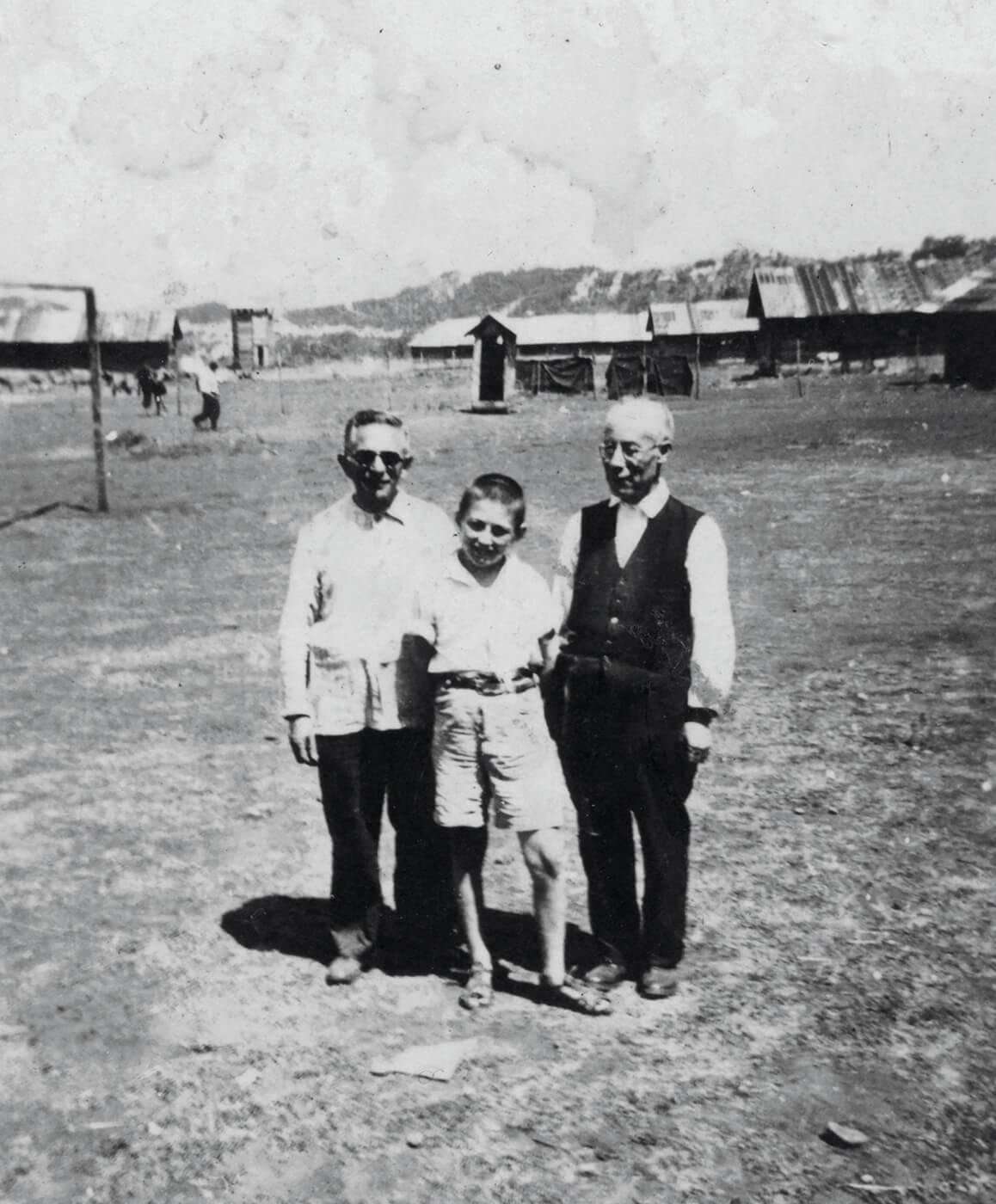
Visits to the Preza internment camp were allowed, which is how this photo came about. Raul has treasured the photo throughout his life, because it is the last picture of his father. After the liberation in Tröbitz, the family came to Mühlberg on the Elbe, where his father died. His mother survived.
"There were no cars in Pristina before the war, transportation was by horse. It was a very peaceful town. My first encounter with automobiles was when the Wehrmacht entered the city with a column of vehicles."
Raul Teitelbaum, in April 1945 fourteen years old
Raul Teitelbaum was born in 1931 in Pristina, Kosovo, in former Yugoslavia, to a middle-class doctor’s family. His participation in the resistance of the partisans, which his father supported, had a lasting influence on his life. In 1949, Raul moved to Israel with his mother, where he started a family. After completing his military service and studying history, he became a journalist. Later in Bonn he headed the Germany bureau of the largest Israeli daily newspaper, Yediot Aharonot. As a left-wing politician, journalist and survivor of the Holocaust, he has fought for justice throughout his life.
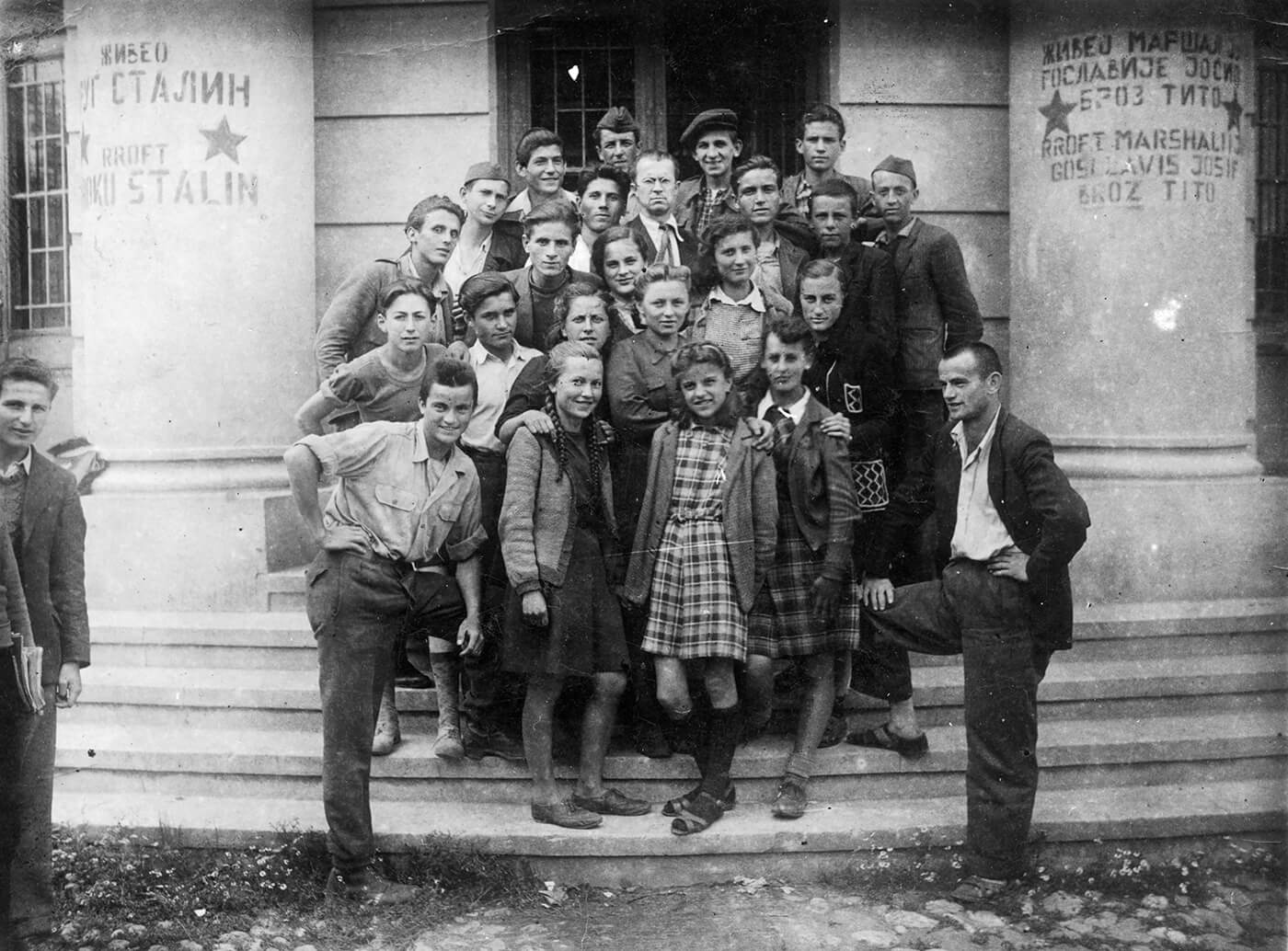
After the liberation Raul and his mother returned to Pristina. They later moved to Belgrade so that he could complete high school there. Raul was active in communist school and youth groups. He also wrote journalistic reports for a radio broadcaster.
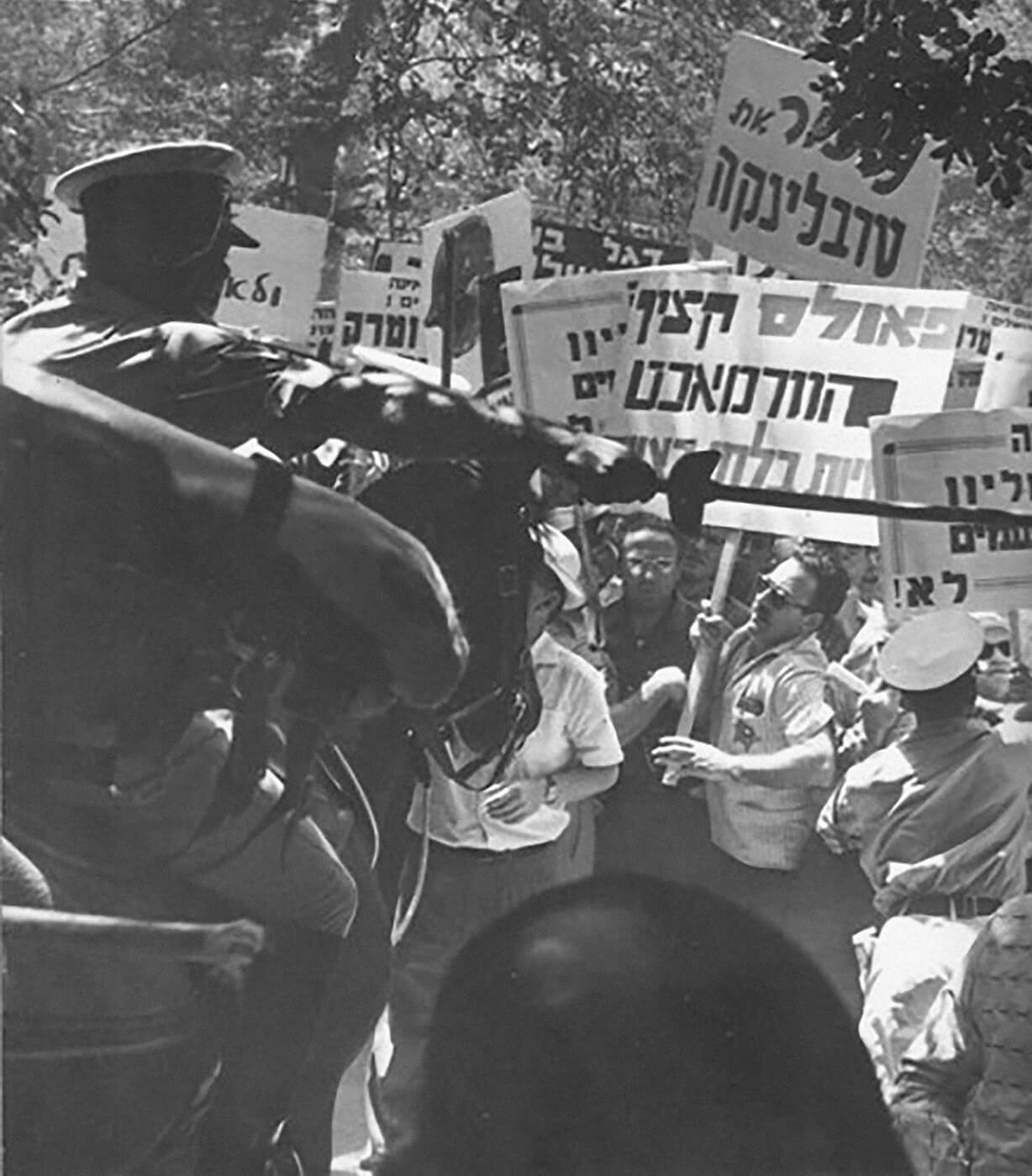
In Israel Raul protested against an agreement with the Federal Government of Germany under Chancellor Adenauer. The protest was directed at Adenauer’s state secretary, Hans Globke, who had played an important role in formulating and enforcing the anti-Semitic Nazi laws during the "Third Reich".
"We, the survivors, appeal to the world to fight relentlessly against anti-Semitism, racism and the denial of the Holocaust."
Raul Teitelbaum, 2008
Raul Teitelbaum considers what the Holocaust means for Jews today. | Video 2:55 min
"Do not do unto your neighbor what you yourself hate."
Survivors’ Manifesto, Jerusalem 2002
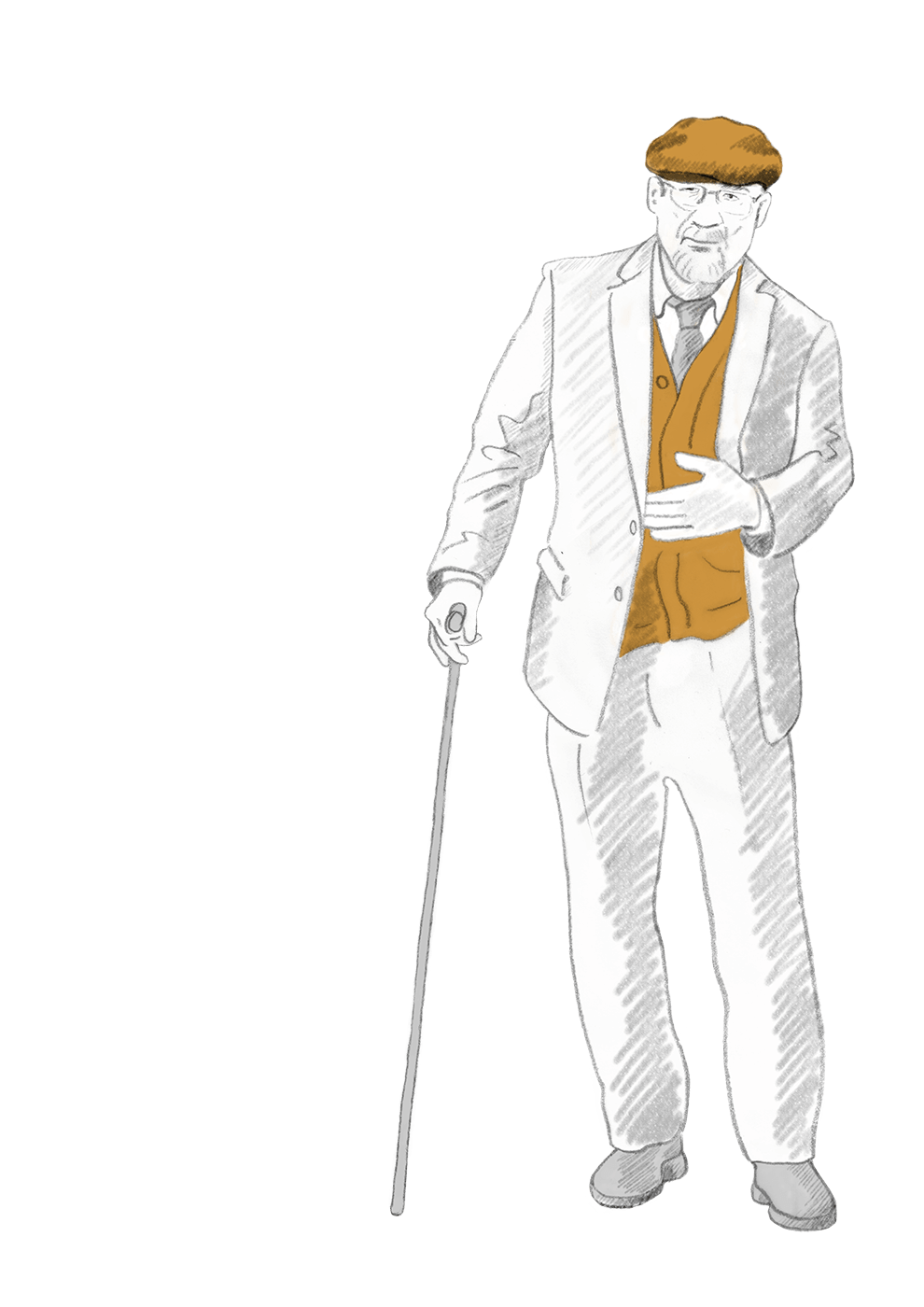
A mouthpiece of the survivors
In Israel, Raul Teitelbaum was politically engaged in the Left. As a journalist and contemporary witness, he participated in important public discussions in Germany about the Nazi past. This included the Goldhagen debate about the role of anti-Semitism. Raul Teitelbaum also dealt intensively with the history of redress and compensation after 1945 ("Wiedergutmachung"). In 2002 he was one of the authors of a "Survivors’ Manifesto", which was directed above all at subsequent generations. Raul also dealt artistically with his own traumatic experiences as a Holocaust survivor.
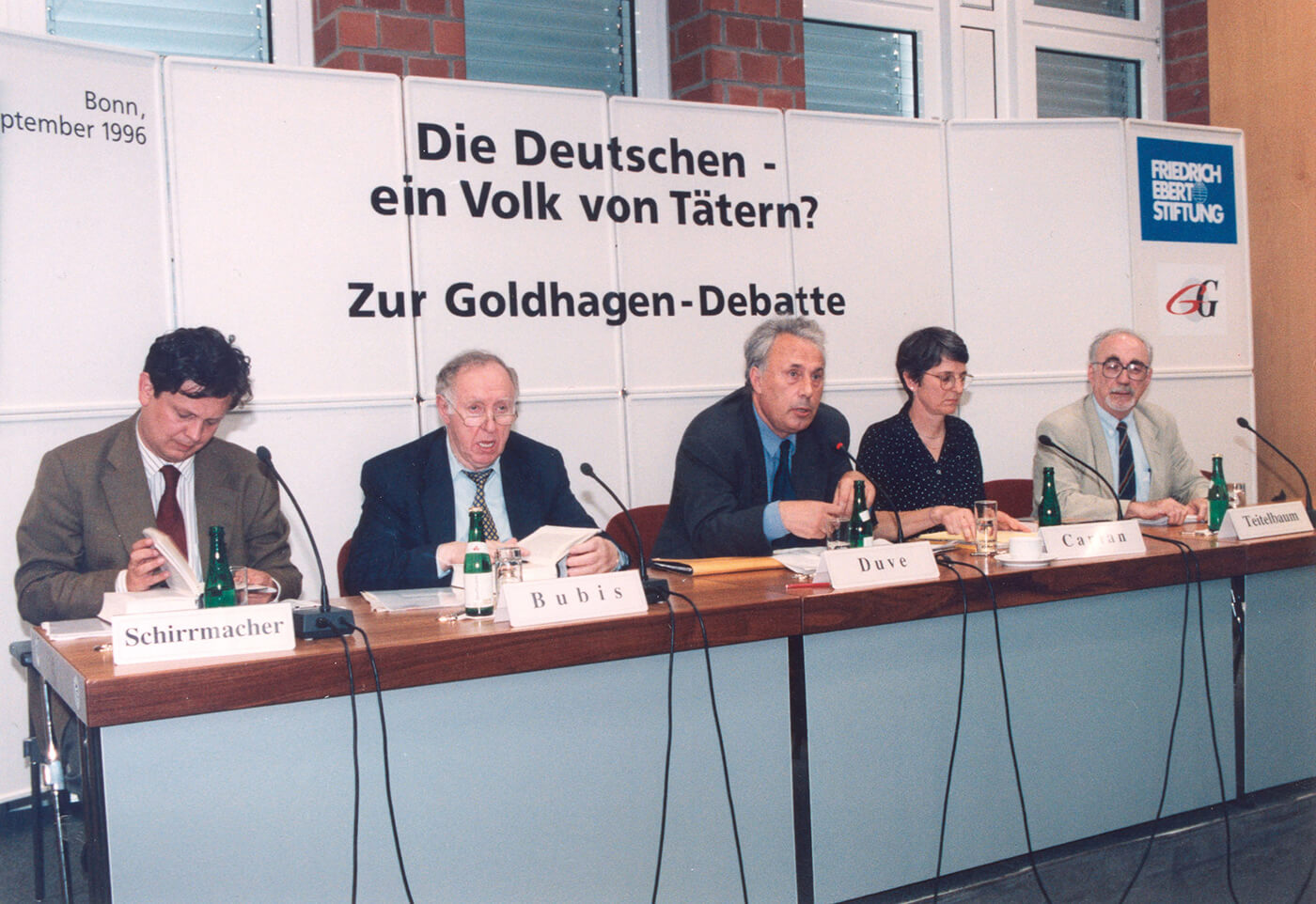
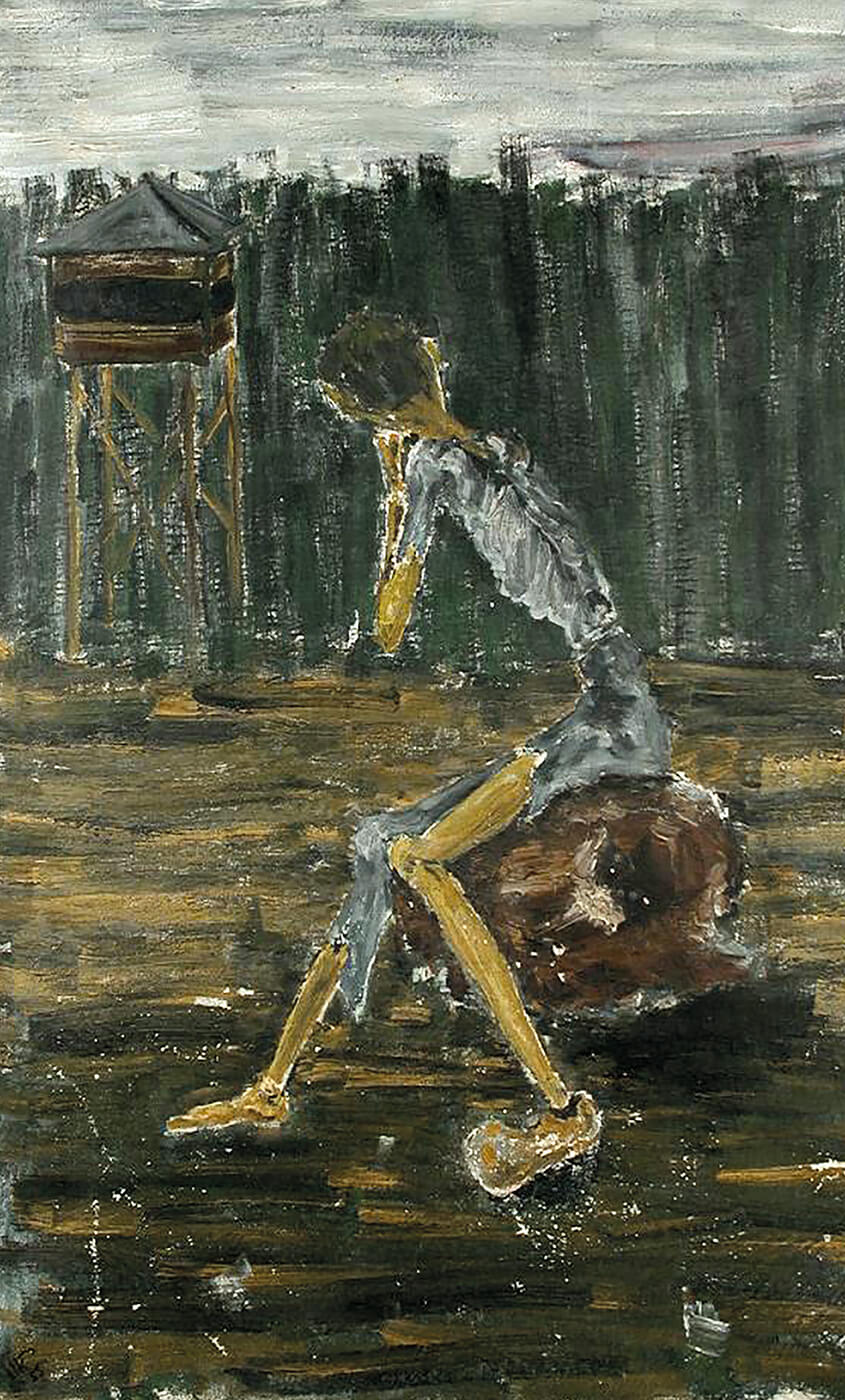
This is the first picture by Raul Teitelbaum when he began painting at the age of 19. For a long time it hung in his bedroom and living room. Later Raul endowed it to the Yad Vashem Memorial.
